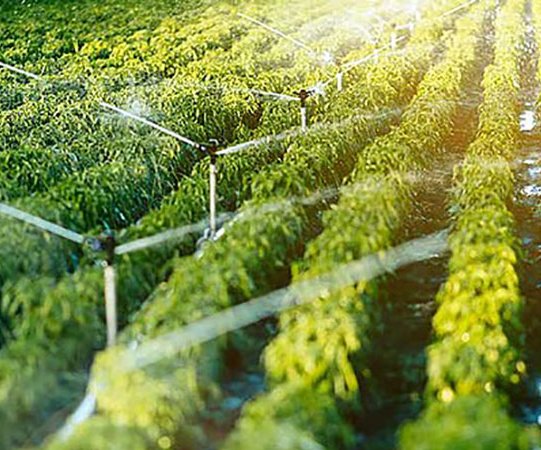By Vicky Boyd
Ag Alert
California’s walnut industry entered the 2025-26 marketing year essentially sold out of supply, which bodes well for moving this season’s 710,000-ton crop, with reasonable grower returns.
Strong export demand, a new domestic marketing push and mild summer growing conditions that produced light-colored kernels also have buoyed the industry.
“I think we’re in a good position to be able to move a lot of the crop at a decent price,” said Daniel Bays, who farms diversified tree and row crops with his family near Westley. “Last year’s small crop with relatively good quality primed the market where the buyers are looking at California for high-quality nuts.”
Bill Carriere, CEO of Carriere Family Farms in Glenn County, agreed and said he was optimistic.
“I’m happy with the harvest,” he said. “I’m glad it wasn’t a 800,000-ton limb-breaker, and I’m glad it wasn’t a 600,000-ton disaster. We’ll have good supplies for the customers, more stable prices and good yields for growers.”
Harvest in the northern Sacramento Valley appeared further ahead than in the San Joaquin Valley. Ken Vogel, who farms walnuts and cherries near Linden, said he was fortunate to get his trees shaken and nuts picked up before the big October rains.
While he hasn’t yet received a report from the huller, he said his Chandler variety appeared heavier than in 2024, but individual nut size was smaller this season.
“I’m seeing a lot more small nuts than I’d like, and I’m not sure if it’s just me,” Vogel said. “It could be because we didn’t have that much heat this summer.”
Nevertheless, he said he’s hopeful about the market and grower prices.
“All the different predictions say it’s going to be pretty good compared to what we’ve had the last three to four years but not (as high as) we had six or seven years ago,” Vogel said.
Carriere said he expected to finish harvesting and hulling the crop by the end of October. Based on crack-out sampling, he said walnuts harvested before the early October rains had nice light-colored shells and kernels suitable for in-shell markets.
After the rains, he said he saw a bit more staining, which probably diverted about 4% of the in-shell crop from those markets, but the kernels retained their lightness.
“For the in-shell market, I think there’s plenty of nuts in the barn pre-rain,” Carriere said. “Even down south, we can satisfy the in-shell market, and prices have been holding pretty well.”
California Walnut Commission and Walnut Board CEO Robert Verloop described the crop as “vintage” and credited this season’s mild weather for what appear to be high-quality nuts.
“We want to be conservative, and until the end of the crop, we won’t know the complete picture. But every indication is this is a stellar crop,” he said.
With about 65% of the crop exported, tariffs remain a concern, Verloop and Carriere said. For example, Verloop pointed to Turkey, which recently reduced tariffs by 10%. That brought remaining tariffs down to 15%, in line with many other countries.
“Turkey is a big market for us,” Verloop said. “Last year we didn’t ship as much because we didn’t have as large a crop. All indications are they’re anxious to get California product back.”
David Magaña, a Fresno-based senior horticulture analyst with Rabo AgriFinance, said he’s guardedly optimistic about increased California walnut exports because the global market appears to be balanced. Chile, which competes against California with similar kernel quality and walnut varieties, faced comparable supply and demand issues the past several years.
With the spring harvest complete, he said, Chilean supplies and prices have apparently returned to more sustainable levels.
In looking at 2024-25 California walnut shipments, Magaña said Germany stood out because it increased in-shell walnut imports by 26% during what was a short crop year. “That’s remarkable given we had low availability,” he said.
The United Kingdom also holds promise as an importer because of a recently negotiated trade agreement with the U.S. that eliminated tariffs on California walnuts. What remains unknown are the effects of tariffs and retaliatory tariffs on other markets, Magaña said.
Expected talks between President Donald Trump and Narendra Modi did not materialize last month as the Indian prime minister skipped an Asian trade summit Trump attended. Verloop said all eyes were on India, which reduced tariffs on walnuts by 20% about18 months ago but still maintains 100% tariffs.
Currently, India imports about 17,000-18,000 tons of California walnuts annually. But Verloop said the market could expand to 100,000 tons with a tariff reduction that would make the nuts more affordable to consumers.
Domestically, the walnut board is leaning heavily on digital media and social media influencers to reach younger consumers with its “Feel Good” campaign. Not only does it build on previous health-related research the commission funded, but it also builds on walnuts’ role in promoting overall well-being and gut health.
To boost the use of walnuts as snacks, Verloop said the walnut commission and board are working with processors on smaller, more convenient package sizes and enticing flavors. The board also is encouraging major retailers to increase walnut displays in produce departments, which tend to price products aggressively to move more volume.
If the U.S. Department of Agriculture’s 710,000-ton estimate from 365,000 bearing acres comes to fruition, it would be the fifth-largest crop in state history. Only the 2020-2023 season yields, when bearing acreage ranged between 370,000 and 400,000 acres, were higher.
Record production, post-COVID shipping issues and poor kernel quality caused by a 2022 fall heat wave pushed prices down as low as 25 cents per pound.
In response, many growers removed uneconomical orchards or those with undesirable varieties. Less acreage, coupled with an unusually small crop of 603,000 tons in 2024, reduced market supplies, sending grower prices higher.
The USDA average grower price, which includes all varieties, in-shell and kernels, was 86 cents per pound for 2024 or about double that of the 2023 season. Bays said he hoped to receive a similar price or slightly more for the 2025 crop.
If that happens, he said it would likely cover production costs, possibly return a slight profit, depending on an individual farm’s financial structures, and allow farmers to play catch-up.
“You had several years where it didn’t matter how you were structured. Walnuts weren’t profitable,” Bays said. “So you need some good returns to backfill that hole and keep us whole going forward as growers. And the cost of production is higher now than it was previously.”
Vicky Boyd is a reporter in Modesto. She can be reached at agalert@cfbf.com.





